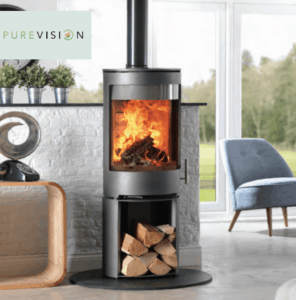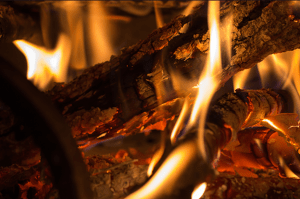 It maybe the summer and your stove may have been in hibernation for a while now. But it’s always good to learn more about ways to reduce pollution. Air quality and pollution have been in the media lots recently, as have the burning of solid fuels. While wood burning stoves have become incredibly fuel efficient, there are still ways to reduce stove pollution. Even if you have invested in an Ecodesign Ready stove, there are still things you can do, or maybe ensure – to make sure pollution is minimised.
It maybe the summer and your stove may have been in hibernation for a while now. But it’s always good to learn more about ways to reduce pollution. Air quality and pollution have been in the media lots recently, as have the burning of solid fuels. While wood burning stoves have become incredibly fuel efficient, there are still ways to reduce stove pollution. Even if you have invested in an Ecodesign Ready stove, there are still things you can do, or maybe ensure – to make sure pollution is minimised.
Managing The Variables:
It is the general “variables”, which will have significant control over the resulting pollution. These variables are things that you can be aware of and take control to ensure pollution remains low.
1. Buy an Efficient Stove – Without stating the glaring obvious, ensuring you buy an efficient stove will help you take control and reduce stove pollution from the very start. A highly efficient stove will be your platform for efficient, environmentally friendly heating.
2. Don’t use wet logs – ever – The amazing design and efficiency of an Ecodesign ready stove will be wasted, if you decide to burn wet or unseasoned logs. Not only are wet logs inefficient, they will greatly increase the risk of Carbon Monoxide poisoning and chimney fires.
3. If you really want to use coal……. – Make sure it is smokeless coal with less than 2% sulphur. While you can burn coal in your Ecodesign stove, and other high efficiency stoves, you should always ensure it is smokeless, especially if you are in a smoke controlled area.
4. Learn to burn well – An Ecodesign stove is a technological work of art, but like with anything, which requires human intervention, there is a risk of user error. Harmful emissions are produced in greater levels if your fire does not have a good air supply. Regardless of what you are burning, leave the door slightly open, and open the air vents when you are getting the fire going. When the fire is established use the air vents to keep the fire burning. Make sure the flue remains at the right temperature throughout, by making sure the fire is constant. Most stoves should be kept between 200 and 250c.
5. Clean and look after your stove – Like with any high performance piece of equipment, an Ecodesign stove needs to be looked after to ensure it performs at it’s best. A congested flue will reduce efficiency, and increases the changes of a chimney fire, or Carbon Monoxide poisoning. You should have your chimney swept every quarter if you are using it frequently.
 Pollution In Your Home:
Pollution In Your Home:
There are three types of pollution in your home, Volatile Organic Compounds, Gases (Including Carbon Dioxide CO2, Nitrogen Dioxide NO2, and Carbon Monoxide, CO) and Particulate Matter.
Volatile Compounds are produced when using heating appliances such as wood burning stoves. VOCs can react with ozone from outdoor air, particularly in hot weather, to form the gas formaldehyde and other irritants. Formaldehyde is a lung irritant that can cause allergic reactions, and, at very high levels, is carcinogenic.
Gases such as Carbon Monoxide are released when fuel burns without adequate oxygen, which is why we outlined the point above about ensuring you learn to burn your fuel well. Oxygen supply is essential for a good heat output, and also to help avoid deadly gases like Carbon Monoxide forming.
Particulate Matter – Combustion creates very small particulate matter. But it can also come from other things too, like dusting and vacuuming. Particulate matter can increases the risk of lung and heart related issues if inhaled over a long period of time.
By becoming aware of the various types of pollution both inside and outside the home, can provide a real appreciation of the potential threats, and why using your stove correctly is of such vital importance.








